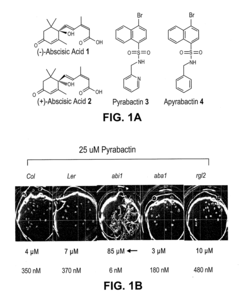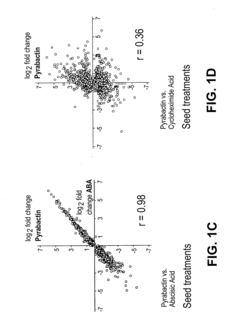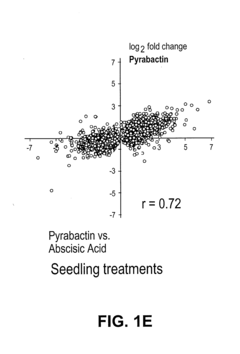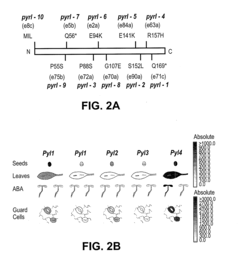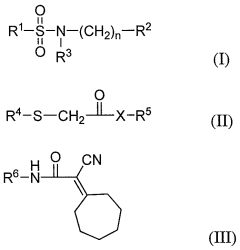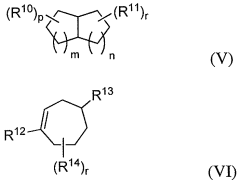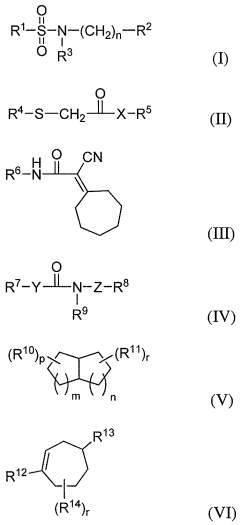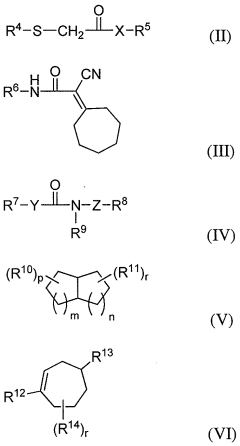Abscisic Acid in Plant Cellular Defense Mechanisms
JUL 14, 20258 MIN READ
Generate Your Research Report Instantly with AI Agent
Patsnap Eureka helps you evaluate technical feasibility & market potential.
ABA Research Background
Abscisic acid (ABA) is a crucial plant hormone that plays a vital role in regulating various physiological processes, including plant growth, development, and stress responses. The research on ABA's involvement in plant cellular defense mechanisms has gained significant attention in recent years due to its potential applications in improving crop resilience and productivity.
The study of ABA dates back to the 1960s when it was first isolated and identified as a plant growth inhibitor. Initially, ABA was primarily associated with seed dormancy and abscission processes. However, subsequent research revealed its multifaceted roles in plant biology, particularly in stress responses and cellular defense mechanisms.
Over the past few decades, scientists have made substantial progress in understanding the biosynthesis, signaling pathways, and molecular mechanisms of ABA-mediated responses. The discovery of the PYR/PYL/RCAR family of ABA receptors in 2009 marked a significant milestone in ABA research, providing crucial insights into the hormone's perception and signal transduction.
ABA's role in plant cellular defense mechanisms has emerged as a key area of interest. It has been found to regulate stomatal closure, which is essential for controlling water loss and preventing pathogen entry. Additionally, ABA influences the expression of numerous defense-related genes, contributing to the plant's overall immune response.
Recent advancements in genomics, proteomics, and metabolomics have greatly expanded our understanding of ABA-mediated defense responses. These technologies have enabled researchers to identify and characterize novel components of ABA signaling networks and their interactions with other stress-responsive pathways.
The growing concern over climate change and food security has further intensified research efforts in this field. Scientists are exploring ways to manipulate ABA signaling to enhance crop tolerance to various abiotic stresses, such as drought, salinity, and extreme temperatures. This research has significant implications for developing climate-resilient crops and ensuring sustainable agriculture.
As we delve deeper into the complexities of ABA-mediated cellular defense mechanisms, new questions and challenges continue to emerge. The intricate crosstalk between ABA and other plant hormones, the specificity of ABA responses in different plant tissues and developmental stages, and the potential trade-offs between stress tolerance and plant productivity are some of the areas that require further investigation.
The study of ABA dates back to the 1960s when it was first isolated and identified as a plant growth inhibitor. Initially, ABA was primarily associated with seed dormancy and abscission processes. However, subsequent research revealed its multifaceted roles in plant biology, particularly in stress responses and cellular defense mechanisms.
Over the past few decades, scientists have made substantial progress in understanding the biosynthesis, signaling pathways, and molecular mechanisms of ABA-mediated responses. The discovery of the PYR/PYL/RCAR family of ABA receptors in 2009 marked a significant milestone in ABA research, providing crucial insights into the hormone's perception and signal transduction.
ABA's role in plant cellular defense mechanisms has emerged as a key area of interest. It has been found to regulate stomatal closure, which is essential for controlling water loss and preventing pathogen entry. Additionally, ABA influences the expression of numerous defense-related genes, contributing to the plant's overall immune response.
Recent advancements in genomics, proteomics, and metabolomics have greatly expanded our understanding of ABA-mediated defense responses. These technologies have enabled researchers to identify and characterize novel components of ABA signaling networks and their interactions with other stress-responsive pathways.
The growing concern over climate change and food security has further intensified research efforts in this field. Scientists are exploring ways to manipulate ABA signaling to enhance crop tolerance to various abiotic stresses, such as drought, salinity, and extreme temperatures. This research has significant implications for developing climate-resilient crops and ensuring sustainable agriculture.
As we delve deeper into the complexities of ABA-mediated cellular defense mechanisms, new questions and challenges continue to emerge. The intricate crosstalk between ABA and other plant hormones, the specificity of ABA responses in different plant tissues and developmental stages, and the potential trade-offs between stress tolerance and plant productivity are some of the areas that require further investigation.
Market Demand Analysis
The market demand for research on Abscisic Acid (ABA) in plant cellular defense mechanisms has been steadily growing in recent years, driven by several key factors. Climate change and increasing environmental stresses have heightened the need for crops with enhanced resilience and adaptability. This has led to a surge in interest from agricultural biotechnology companies and research institutions seeking to develop stress-tolerant plant varieties.
The global plant growth regulators market, which includes ABA-related products, is experiencing significant expansion. This growth is particularly pronounced in regions facing severe agricultural challenges due to drought, salinity, and extreme temperatures. North America and Europe currently dominate the market, but rapid growth is observed in Asia-Pacific and Latin American countries as they intensify efforts to improve crop yields and food security.
Pharmaceutical and nutraceutical industries are also showing increased interest in ABA research, recognizing its potential applications beyond agriculture. The compound's role in cellular signaling and stress response mechanisms has piqued interest for possible human health applications, although this remains a nascent area of exploration.
The demand for ABA-related technologies extends to the horticulture and floriculture sectors, where precise control of plant growth and development is crucial. These industries are seeking innovative solutions to enhance plant quality, extend shelf life, and improve overall crop management.
Environmental conservation efforts and sustainable agriculture initiatives are further driving the demand for ABA research. As governments and organizations worldwide push for reduced pesticide use and more environmentally friendly farming practices, ABA's role in natural plant defense mechanisms becomes increasingly valuable.
The seed treatment market, closely linked to ABA research, is projected to see substantial growth. Seed companies are investing in technologies that can enhance seed vigor and stress tolerance, with ABA playing a potential key role in these advancements.
Academic institutions and public research organizations are also contributing to the market demand, fueled by increased funding for plant science and agricultural biotechnology. This academic interest is crucial for driving fundamental research that can later be translated into commercial applications.
Despite the growing demand, challenges remain in terms of regulatory approvals and public acceptance of plant biotechnology products. These factors may influence the pace of market growth and the commercialization of ABA-related technologies.
The global plant growth regulators market, which includes ABA-related products, is experiencing significant expansion. This growth is particularly pronounced in regions facing severe agricultural challenges due to drought, salinity, and extreme temperatures. North America and Europe currently dominate the market, but rapid growth is observed in Asia-Pacific and Latin American countries as they intensify efforts to improve crop yields and food security.
Pharmaceutical and nutraceutical industries are also showing increased interest in ABA research, recognizing its potential applications beyond agriculture. The compound's role in cellular signaling and stress response mechanisms has piqued interest for possible human health applications, although this remains a nascent area of exploration.
The demand for ABA-related technologies extends to the horticulture and floriculture sectors, where precise control of plant growth and development is crucial. These industries are seeking innovative solutions to enhance plant quality, extend shelf life, and improve overall crop management.
Environmental conservation efforts and sustainable agriculture initiatives are further driving the demand for ABA research. As governments and organizations worldwide push for reduced pesticide use and more environmentally friendly farming practices, ABA's role in natural plant defense mechanisms becomes increasingly valuable.
The seed treatment market, closely linked to ABA research, is projected to see substantial growth. Seed companies are investing in technologies that can enhance seed vigor and stress tolerance, with ABA playing a potential key role in these advancements.
Academic institutions and public research organizations are also contributing to the market demand, fueled by increased funding for plant science and agricultural biotechnology. This academic interest is crucial for driving fundamental research that can later be translated into commercial applications.
Despite the growing demand, challenges remain in terms of regulatory approvals and public acceptance of plant biotechnology products. These factors may influence the pace of market growth and the commercialization of ABA-related technologies.
Current ABA Research Status
Abscisic acid (ABA) research has made significant strides in recent years, particularly in understanding its role in plant cellular defense mechanisms. Current studies focus on elucidating the complex signaling pathways and molecular interactions that mediate ABA-induced responses to various environmental stresses.
One of the key areas of investigation is the ABA receptors and their downstream signaling components. The PYR/PYL/RCAR family of ABA receptors has been extensively characterized, revealing their crucial role in ABA perception and signal transduction. These receptors interact with protein phosphatases (PP2Cs) and SNF1-related protein kinases (SnRK2s) to regulate ABA-responsive gene expression and physiological responses.
Recent research has also shed light on the crosstalk between ABA and other phytohormones in plant defense responses. Studies have shown that ABA interacts with jasmonic acid, salicylic acid, and ethylene signaling pathways to fine-tune plant responses to biotic and abiotic stresses. This hormonal crosstalk allows plants to prioritize and coordinate their defense strategies in response to multiple environmental challenges.
The role of ABA in stomatal regulation has been a major focus of current research. Advanced imaging techniques and molecular tools have revealed the intricate mechanisms by which ABA controls stomatal aperture, including the regulation of ion channels, membrane transporters, and cytoskeletal rearrangements. These findings have important implications for improving plant water use efficiency and drought tolerance.
Epigenetic regulation of ABA-mediated responses is another emerging area of study. Researchers have identified various chromatin modifications and small RNAs that modulate ABA signaling and gene expression. These epigenetic mechanisms contribute to the plasticity of plant responses to environmental stresses and may play a role in stress memory and priming.
The application of systems biology approaches has provided new insights into the global regulation of ABA-responsive genes and proteins. Transcriptomics, proteomics, and metabolomics studies have revealed complex networks of ABA-regulated processes, identifying novel components and regulatory hubs in ABA signaling pathways.
Lastly, current research is exploring the potential of manipulating ABA signaling for crop improvement. Genetic engineering and genome editing techniques are being employed to enhance plant stress tolerance by modifying ABA biosynthesis, perception, or signaling components. These efforts aim to develop more resilient crops that can maintain productivity under adverse environmental conditions.
One of the key areas of investigation is the ABA receptors and their downstream signaling components. The PYR/PYL/RCAR family of ABA receptors has been extensively characterized, revealing their crucial role in ABA perception and signal transduction. These receptors interact with protein phosphatases (PP2Cs) and SNF1-related protein kinases (SnRK2s) to regulate ABA-responsive gene expression and physiological responses.
Recent research has also shed light on the crosstalk between ABA and other phytohormones in plant defense responses. Studies have shown that ABA interacts with jasmonic acid, salicylic acid, and ethylene signaling pathways to fine-tune plant responses to biotic and abiotic stresses. This hormonal crosstalk allows plants to prioritize and coordinate their defense strategies in response to multiple environmental challenges.
The role of ABA in stomatal regulation has been a major focus of current research. Advanced imaging techniques and molecular tools have revealed the intricate mechanisms by which ABA controls stomatal aperture, including the regulation of ion channels, membrane transporters, and cytoskeletal rearrangements. These findings have important implications for improving plant water use efficiency and drought tolerance.
Epigenetic regulation of ABA-mediated responses is another emerging area of study. Researchers have identified various chromatin modifications and small RNAs that modulate ABA signaling and gene expression. These epigenetic mechanisms contribute to the plasticity of plant responses to environmental stresses and may play a role in stress memory and priming.
The application of systems biology approaches has provided new insights into the global regulation of ABA-responsive genes and proteins. Transcriptomics, proteomics, and metabolomics studies have revealed complex networks of ABA-regulated processes, identifying novel components and regulatory hubs in ABA signaling pathways.
Lastly, current research is exploring the potential of manipulating ABA signaling for crop improvement. Genetic engineering and genome editing techniques are being employed to enhance plant stress tolerance by modifying ABA biosynthesis, perception, or signaling components. These efforts aim to develop more resilient crops that can maintain productivity under adverse environmental conditions.
ABA Defense Mechanisms
01 Synthesis and production of abscisic acid
Various methods for synthesizing and producing abscisic acid are described. These include chemical synthesis routes, biotechnological approaches using microorganisms, and extraction techniques from plant sources. The production methods aim to improve yield, purity, and cost-effectiveness of abscisic acid for various applications.- Synthesis and production of abscisic acid: Various methods for synthesizing and producing abscisic acid, including chemical synthesis, biotechnological approaches, and extraction from plant sources. These techniques aim to improve the efficiency and yield of abscisic acid production for agricultural and research applications.
- Agricultural applications of abscisic acid: Use of abscisic acid in agriculture for various purposes, such as regulating plant growth, improving stress tolerance, and enhancing crop yield. Applications include seed treatment, foliar sprays, and soil amendments to promote plant health and productivity.
- Abscisic acid analogs and derivatives: Development and use of abscisic acid analogs and derivatives with enhanced stability, bioactivity, or specificity. These modified compounds may offer improved performance in various applications, such as plant growth regulation or stress management.
- Formulations containing abscisic acid: Preparation of various formulations containing abscisic acid for different applications, including liquid solutions, emulsions, and solid forms. These formulations may include additional ingredients to enhance stability, efficacy, or delivery of abscisic acid.
- Detection and quantification of abscisic acid: Methods and techniques for detecting and quantifying abscisic acid in plant tissues, seeds, or other biological samples. These may include chromatographic, spectroscopic, or immunological approaches to measure abscisic acid levels for research or quality control purposes.
02 Agricultural applications of abscisic acid
Abscisic acid is used in agriculture for various purposes, including plant growth regulation, stress tolerance enhancement, and crop yield improvement. It can be applied as a foliar spray, seed treatment, or soil amendment to modulate plant responses to environmental stresses such as drought, salinity, and temperature extremes.Expand Specific Solutions03 Formulations containing abscisic acid
Different formulations of abscisic acid are developed for specific applications. These may include liquid concentrates, water-dispersible granules, or slow-release formulations. The formulations often contain additives to enhance stability, absorption, and efficacy of abscisic acid in various environmental conditions.Expand Specific Solutions04 Abscisic acid analogs and derivatives
Research on abscisic acid analogs and derivatives aims to develop compounds with enhanced biological activity, improved stability, or specific functional properties. These modified forms of abscisic acid may offer advantages in terms of potency, selectivity, or duration of action in various applications.Expand Specific Solutions05 Detection and quantification methods for abscisic acid
Various analytical techniques are developed for detecting and quantifying abscisic acid in plant tissues, biological samples, or environmental matrices. These methods may include chromatographic techniques, immunoassays, or biosensor-based approaches, aiming to improve sensitivity, specificity, and efficiency of abscisic acid measurements.Expand Specific Solutions
Key ABA Research Players
The research on Abscisic Acid in plant cellular defense mechanisms is in a mature stage of development, with significant market potential in the agricultural sector. The global market for plant growth regulators, including Abscisic Acid, is expected to grow substantially due to increasing demand for crop protection and yield enhancement. Technologically, the field is well-established, with companies like Valent BioSciences Corp., Syngenta Participations AG, and Pioneer Hi-Bred International leading the way. Academic institutions such as China Agricultural University and the University of Saskatchewan are also contributing significantly to advancements in this area. The involvement of both industry leaders and research institutions indicates a high level of technological maturity and ongoing innovation in Abscisic Acid research.
China Agricultural University
Technical Solution: China Agricultural University has made significant advancements in understanding the role of Abscisic Acid (ABA) in plant cellular defense mechanisms. Their research focuses on the molecular mechanisms of ABA signaling and its impact on plant stress responses. They have identified key components of the ABA signaling pathway, including receptors, protein phosphatases, and transcription factors[1]. Their studies have revealed that ABA plays a crucial role in stomatal closure, which is essential for plant water conservation and defense against pathogens[2]. Additionally, they have explored the crosstalk between ABA and other phytohormones in regulating plant defense responses[3]. The university has also developed transgenic plants with enhanced ABA sensitivity, demonstrating improved drought tolerance and disease resistance[4].
Strengths: Comprehensive understanding of ABA signaling pathways and their role in plant stress responses. Successful development of transgenic plants with enhanced stress tolerance. Weaknesses: Limited focus on practical applications in agriculture, potential regulatory challenges for transgenic plants.
Syngenta Participations AG
Technical Solution: Syngenta has developed innovative approaches to harness the power of ABA in improving crop resilience. Their research on ABA focuses on enhancing plant drought tolerance and water use efficiency. They have engineered plants with modified ABA receptors that show increased sensitivity to ABA, resulting in improved drought tolerance without significant yield penalties[5]. Syngenta has also developed ABA analogs that can be applied as agrochemicals to induce stress tolerance in crops[6]. Their studies have revealed the potential of ABA-mediated responses in enhancing plant defense against both abiotic and biotic stresses. They have identified specific ABA-responsive genes that play dual roles in drought tolerance and pathogen resistance[7]. Syngenta's approach combines genetic engineering and chemical interventions to optimize ABA-mediated stress responses in crops.
Strengths: Practical applications in agriculture, combining genetic and chemical approaches. Development of commercially viable ABA-based products. Weaknesses: Potential public concerns about genetically modified crops, regulatory hurdles for new agrochemicals.
ABA Receptor Innovations
Control of plant stress tolerance, water use efficiency and gene expression using novel ABA receptor proteins and synthetic agonists
PatentActiveUS20100216643A1
Innovation
- Introduction of a heterologous expression cassette in plants encoding a PYR/PYL receptor polypeptide, which binds type 2 protein phosphatases (PP2Cs), enhancing drought and stress tolerance by modulating ABA signaling pathways.
Control of plant stress tolerance, water use efficiency and gene expression using novel ABA receptor proteins and synthetic agonists
PatentWO2010093954A2
Innovation
- Introduction of a heterologous expression cassette in plants encoding PYR/PYL receptor polypeptides, which bind type 2 protein phosphatases (PP2Cs) in the presence or absence of abscisic acid, enhancing stress tolerance and drought resistance, along with the use of synthetic ABA agonists that activate these receptors.
ABA Regulatory Aspects
Abscisic acid (ABA) plays a crucial role in plant cellular defense mechanisms, with its regulatory aspects being of particular importance. ABA signaling is a complex network involving numerous components that work together to modulate plant responses to various environmental stresses.
At the core of ABA regulation are the PYR/PYL/RCAR receptors, which undergo conformational changes upon binding to ABA. This interaction leads to the inhibition of type 2C protein phosphatases (PP2Cs), key negative regulators of ABA signaling. The inactivation of PP2Cs allows for the activation of SNF1-related protein kinases (SnRK2s), which are essential positive regulators of ABA responses.
SnRK2s phosphorylate various downstream targets, including transcription factors such as ABA-responsive element binding factors (ABFs). These transcription factors bind to ABA-responsive elements (ABREs) in the promoter regions of ABA-responsive genes, triggering their expression and initiating cellular defense mechanisms.
The regulation of ABA biosynthesis and catabolism is another critical aspect of its regulatory network. Key enzymes in ABA biosynthesis, such as 9-cis-epoxycarotenoid dioxygenase (NCED), are upregulated under stress conditions, leading to increased ABA levels. Conversely, ABA catabolism is regulated by ABA 8'-hydroxylases, which are responsible for ABA inactivation.
Post-translational modifications play a significant role in fine-tuning ABA signaling. Ubiquitination and sumoylation of ABA signaling components can alter their stability, localization, and activity, providing an additional layer of regulation. For instance, the E3 ubiquitin ligase KEEP ON GOING (KEG) targets ABA-activated transcription factors for degradation, helping to attenuate ABA responses.
Epigenetic regulation also contributes to ABA-mediated defense responses. Histone modifications and DNA methylation patterns can be altered in response to ABA, leading to changes in chromatin structure and gene expression. This epigenetic control allows for long-term adaptation to stress conditions and can even result in transgenerational stress memory.
The integration of ABA signaling with other hormone pathways adds another layer of complexity to its regulatory aspects. Cross-talk between ABA and other phytohormones such as jasmonic acid, ethylene, and salicylic acid fine-tunes plant responses to various biotic and abiotic stresses. This hormonal interplay ensures a coordinated and appropriate defense response to specific environmental challenges.
At the core of ABA regulation are the PYR/PYL/RCAR receptors, which undergo conformational changes upon binding to ABA. This interaction leads to the inhibition of type 2C protein phosphatases (PP2Cs), key negative regulators of ABA signaling. The inactivation of PP2Cs allows for the activation of SNF1-related protein kinases (SnRK2s), which are essential positive regulators of ABA responses.
SnRK2s phosphorylate various downstream targets, including transcription factors such as ABA-responsive element binding factors (ABFs). These transcription factors bind to ABA-responsive elements (ABREs) in the promoter regions of ABA-responsive genes, triggering their expression and initiating cellular defense mechanisms.
The regulation of ABA biosynthesis and catabolism is another critical aspect of its regulatory network. Key enzymes in ABA biosynthesis, such as 9-cis-epoxycarotenoid dioxygenase (NCED), are upregulated under stress conditions, leading to increased ABA levels. Conversely, ABA catabolism is regulated by ABA 8'-hydroxylases, which are responsible for ABA inactivation.
Post-translational modifications play a significant role in fine-tuning ABA signaling. Ubiquitination and sumoylation of ABA signaling components can alter their stability, localization, and activity, providing an additional layer of regulation. For instance, the E3 ubiquitin ligase KEEP ON GOING (KEG) targets ABA-activated transcription factors for degradation, helping to attenuate ABA responses.
Epigenetic regulation also contributes to ABA-mediated defense responses. Histone modifications and DNA methylation patterns can be altered in response to ABA, leading to changes in chromatin structure and gene expression. This epigenetic control allows for long-term adaptation to stress conditions and can even result in transgenerational stress memory.
The integration of ABA signaling with other hormone pathways adds another layer of complexity to its regulatory aspects. Cross-talk between ABA and other phytohormones such as jasmonic acid, ethylene, and salicylic acid fine-tunes plant responses to various biotic and abiotic stresses. This hormonal interplay ensures a coordinated and appropriate defense response to specific environmental challenges.
ABA Environmental Impact
Abscisic acid (ABA) plays a crucial role in plant cellular defense mechanisms, and its environmental impact extends far beyond individual plants. As a key phytohormone, ABA mediates various physiological processes that enable plants to adapt to changing environmental conditions, particularly in response to abiotic stresses such as drought, salinity, and extreme temperatures.
The environmental impact of ABA is most evident in its influence on plant water relations and drought tolerance. By regulating stomatal closure, ABA helps plants conserve water during periods of water scarcity, thereby enhancing their survival in arid environments. This adaptive response has significant implications for ecosystem stability and agricultural productivity in regions prone to drought.
ABA's impact on plant-soil interactions is another important aspect of its environmental influence. The hormone affects root growth and architecture, which in turn alters soil structure and water retention properties. These changes can have cascading effects on soil microbial communities and nutrient cycling, potentially influencing entire ecosystems.
In the context of climate change, ABA's role becomes even more critical. As extreme weather events become more frequent, plants' ability to respond quickly to stress through ABA-mediated pathways could determine the resilience of ecosystems and agricultural systems. The hormone's involvement in seed dormancy and germination also affects plant population dynamics and species distribution patterns, which may shift in response to changing climatic conditions.
ABA's environmental impact extends to plant-pathogen interactions as well. While primarily known for its role in abiotic stress responses, ABA also modulates plant immunity. Its complex interplay with other defense-related hormones can influence the outcome of plant-pathogen encounters, potentially affecting disease prevalence in natural and agricultural ecosystems.
The hormone's effects on crop yield and quality have significant implications for global food security. ABA-mediated stress responses can help maintain crop productivity under adverse conditions, but they may also lead to trade-offs between stress tolerance and yield potential. Understanding and manipulating these pathways could be key to developing climate-resilient crops.
Lastly, ABA's environmental impact is not limited to plants alone. As it influences plant growth and development, it indirectly affects herbivores and pollinators that depend on plants for food and habitat. This can lead to complex ecological interactions and feedback loops that shape ecosystem structure and function.
The environmental impact of ABA is most evident in its influence on plant water relations and drought tolerance. By regulating stomatal closure, ABA helps plants conserve water during periods of water scarcity, thereby enhancing their survival in arid environments. This adaptive response has significant implications for ecosystem stability and agricultural productivity in regions prone to drought.
ABA's impact on plant-soil interactions is another important aspect of its environmental influence. The hormone affects root growth and architecture, which in turn alters soil structure and water retention properties. These changes can have cascading effects on soil microbial communities and nutrient cycling, potentially influencing entire ecosystems.
In the context of climate change, ABA's role becomes even more critical. As extreme weather events become more frequent, plants' ability to respond quickly to stress through ABA-mediated pathways could determine the resilience of ecosystems and agricultural systems. The hormone's involvement in seed dormancy and germination also affects plant population dynamics and species distribution patterns, which may shift in response to changing climatic conditions.
ABA's environmental impact extends to plant-pathogen interactions as well. While primarily known for its role in abiotic stress responses, ABA also modulates plant immunity. Its complex interplay with other defense-related hormones can influence the outcome of plant-pathogen encounters, potentially affecting disease prevalence in natural and agricultural ecosystems.
The hormone's effects on crop yield and quality have significant implications for global food security. ABA-mediated stress responses can help maintain crop productivity under adverse conditions, but they may also lead to trade-offs between stress tolerance and yield potential. Understanding and manipulating these pathways could be key to developing climate-resilient crops.
Lastly, ABA's environmental impact is not limited to plants alone. As it influences plant growth and development, it indirectly affects herbivores and pollinators that depend on plants for food and habitat. This can lead to complex ecological interactions and feedback loops that shape ecosystem structure and function.
Unlock deeper insights with Patsnap Eureka Quick Research — get a full tech report to explore trends and direct your research. Try now!
Generate Your Research Report Instantly with AI Agent
Supercharge your innovation with Patsnap Eureka AI Agent Platform!
